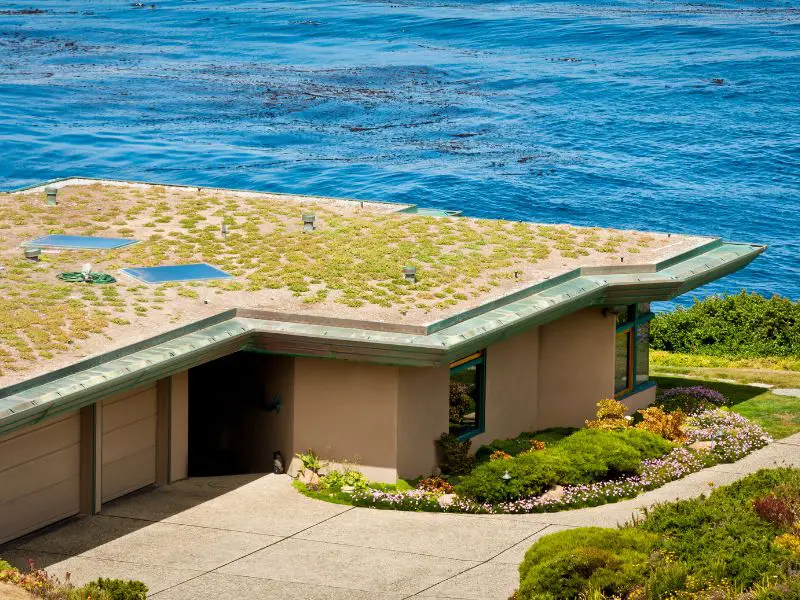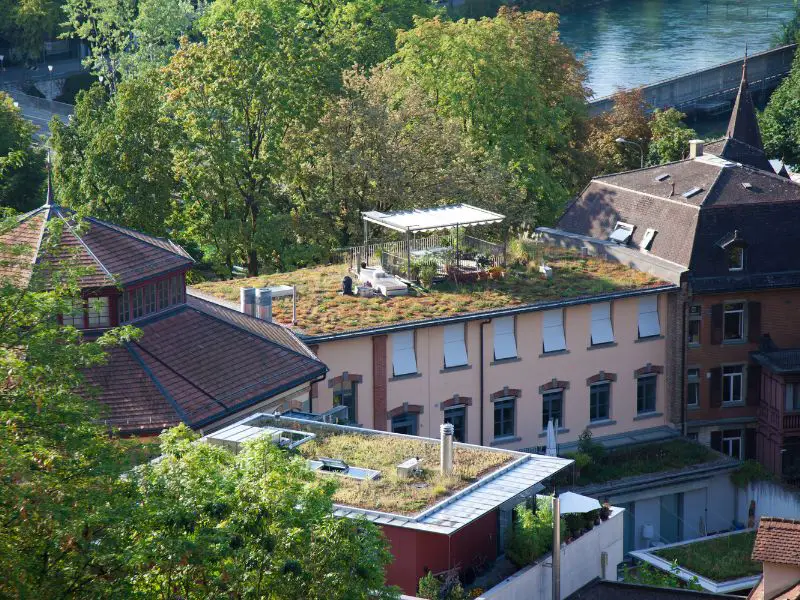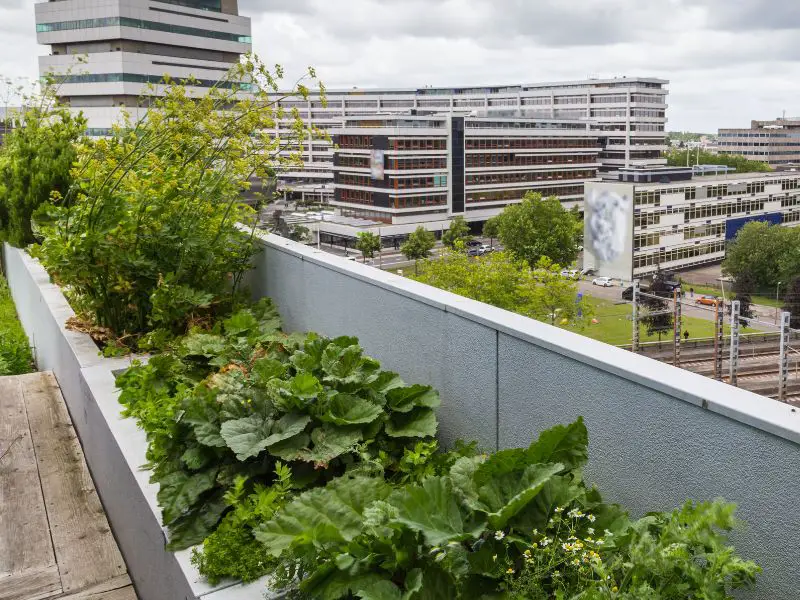Green roof technology has existed for 2,000 years and is a type of roofing construction in which plants are grown on top of a roof. But in recent years, they have gained popularity as a viable construction method. One benefit of this system is that it significantly reduces heat from entering your house in the summer and helps insulate your home more during the winter. Additionally, green roofs can also boost the market value of your property.
In this article, we’ll dive into what green roofs are. From this, you’ll learn if a green roof system is a viable option.
What Are Green Roofs?
Green roofs can comprise several plants or elements, such as sedum mats, moss, or grasses. Green roofs were initially developed in Europe more than 150 years ago. They were originally designed as roofing for homes and other buildings but were soon discovered beneficial to the environment. In recent years, green roofs have resurfaced in the United States. Green roofs are comprised of several different plants or elements that cover the roof of a building. They can be comprised of sedum mats, moss, or grasses.

Green roofs have been around for thousands of years. However, not all green roofs are the same. Some green roofs are just regular roofs covered with a thin layer of soil. Others are gardens with vegetation on top. Still, others are a combination of a roof and a garden.
Is Green Roof Right For You?
Would a green roof be a suitable addition to your home or building? If your roof is level or has slopes no more than 30 degrees and your property is in a sunny, tree-free position, you may be able to install a green roof.
Because green roofs are heavier than traditional roofs, you will also need to ensure that your home can take the additional weight of the soil after a downpour, which is around 20 pounds per square foot. Check the DC Department of Energy and the environment’s rebate program to determine if your property is “green roof ready.”
The cost of installing a green roof on a residential property can run anywhere from $12 to $35 per square foot, and the job should be done by a trained professional. Look for an installer who has expertise in installing green roofs and has received training from Green Roofs for Healthy Cities. This organization has earned the accreditation of Green Roof Professional.

How Long Does It to Install a Green Roof?
The vast majority of home projects may be put in place in a few days. But with big roof sizes, most commercial installations might take weeks to complete. The installation time depends on the project’s scale and complexity. After the roof is finished, the area underneath must be protected and watered until the green roof fully establishes itself. Once the initial establishment period is over, the green roof only needs to be watered regularly and fertilized once or twice a year.
Most green roofs last at least 20 years and, in some cases, much longer. However, it’s essential to understand that maintenance costs will be higher during the initial period of establishment and re-vegetation and repair processes.
Benefits of Building a Green Roof
Green roofs are basically roofs covered with vegetation. They’re also known as vegetated roofs or living roofs. Green roofs have many benefits, including reducing storm-water runoff and providing good insulation. They also decrease energy costs, improve air quality, provide habitat for wildlife, and create green space in urban areas. However, green roofs are not perfect. They require regular care and can be expensive to install. However, the benefits outweigh the drawbacks, and green roofs are becoming increasingly popular in cities worldwide.

Challenges of Having a Green Roof
1. More Expensive Than Traditional Roofs
A green roof is a type of roof covered with vegetation, typically small plants or grass. A green roof is more expensive than a traditional one because plants need a lot of growing space. Also, plants need water, and if you live in a dry area, this can result in higher utility bills. However, a green roof can help reduce a building’s carbon footprint by absorbing carbon dioxide and other greenhouse gases. It’s estimated that a green roof can reduce a building’s carbon footprint by 20% per year.
2. An Increase in the Weight Load of the Roof
Green roofs have several layers, including growing medium, drainage layer, root barrier, and filter fabric. The growing medium is made from soil or rocks that vary in thickness. The drainage layer allows rainwater to drain directly into the stormwater system to a downspout. The root barrier prevents the growth of weeds and other plants.
Filter fabric prevents soil from clogging the drainage system and stops smaller particles from washing through the system. The weight of the green roof increases with each layer added, which can be a major issue for homes built before green roof technology was in existence.
3. Needs Extra Maintenance
There appears to be much debate over the level of maintenance necessary for a green roof, but one thing is sure: you’ll need to put in the effort to guarantee that it maintains a healthy environment. Your green roof should be treated as a garden, requiring watering, fertilization, and weeding. You may either do this yourself or hire someone to maintain the area. Regardless, staying on top of this lush green part of your home requires some work.
What Are the Plants You Can Grow on a Green Roof?
Plant selection is influenced by several variables, such as the temperature, the depth and composition of the growing medium, the loading capacity, the height and slope of the roof, the expected level of care, and whether an irrigation system is present.

Final Notes
The popularity of green roofs has been steadily increasing in recent years, and for a good reason. There are many benefits to planting vegetation on top of your home, including that it helps irrigate plants, reduces air pollution, and improves your home efficiency and market value. Do your research before deciding which type of green roof to install. We hope this covers the basics; just remember there are many other considerations beyond those discussed here, and you may want to get more information before making a decision.
How to make your home more environmentally friendly? Check out Easiest Vegetables to Grow, Vertical Forest and Sustainable Foods.


1 thought on “Green Roofs: Learn How To Improve Your Home’s Efficiency”